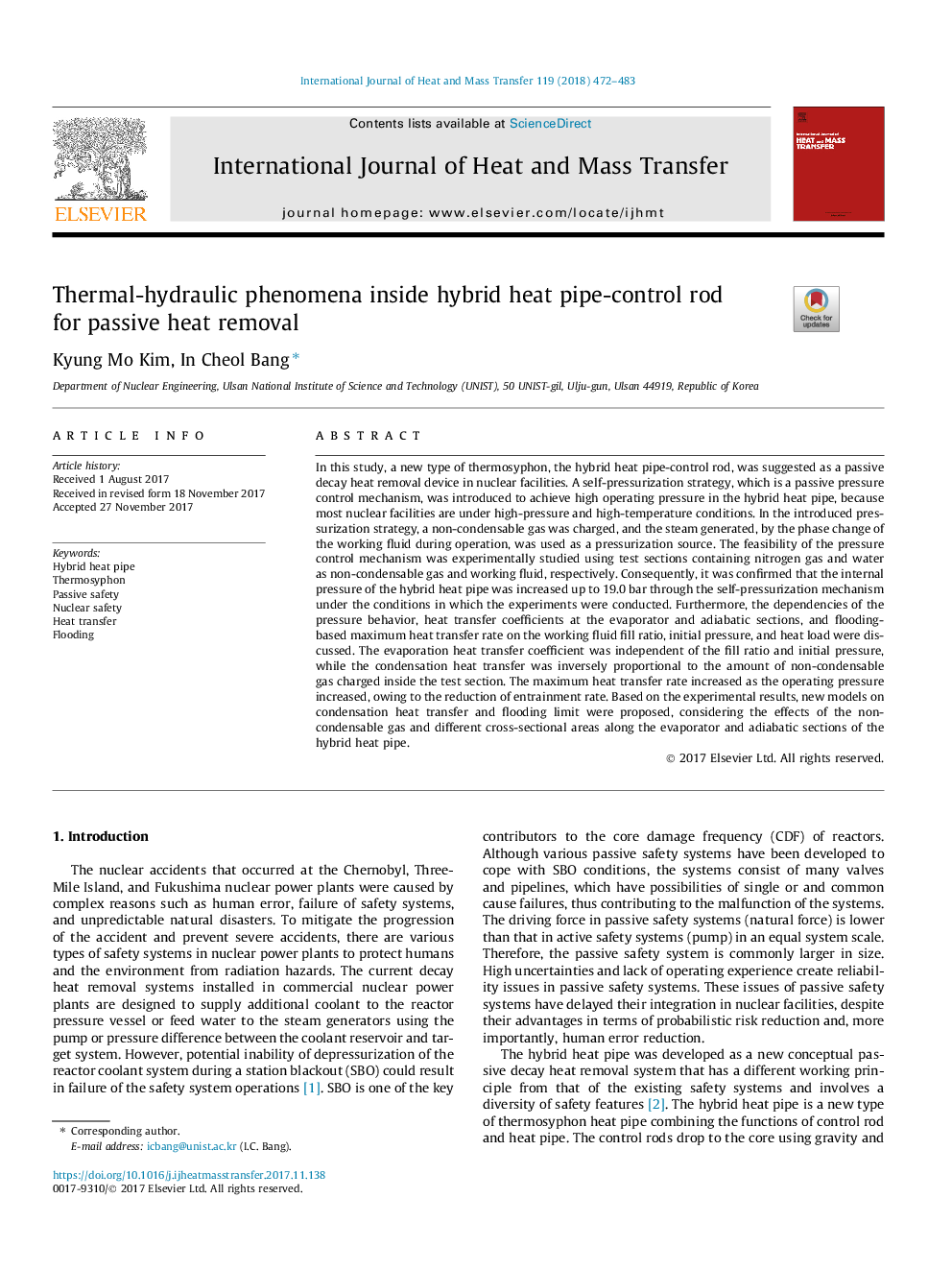| Article ID | Journal | Published Year | Pages | File Type |
|---|---|---|---|---|
| 7054678 | International Journal of Heat and Mass Transfer | 2018 | 12 Pages |
Abstract
In this study, a new type of thermosyphon, the hybrid heat pipe-control rod, was suggested as a passive decay heat removal device in nuclear facilities. A self-pressurization strategy, which is a passive pressure control mechanism, was introduced to achieve high operating pressure in the hybrid heat pipe, because most nuclear facilities are under high-pressure and high-temperature conditions. In the introduced pressurization strategy, a non-condensable gas was charged, and the steam generated, by the phase change of the working fluid during operation, was used as a pressurization source. The feasibility of the pressure control mechanism was experimentally studied using test sections containing nitrogen gas and water as non-condensable gas and working fluid, respectively. Consequently, it was confirmed that the internal pressure of the hybrid heat pipe was increased up to 19.0â¯bar through the self-pressurization mechanism under the conditions in which the experiments were conducted. Furthermore, the dependencies of the pressure behavior, heat transfer coefficients at the evaporator and adiabatic sections, and flooding-based maximum heat transfer rate on the working fluid fill ratio, initial pressure, and heat load were discussed. The evaporation heat transfer coefficient was independent of the fill ratio and initial pressure, while the condensation heat transfer was inversely proportional to the amount of non-condensable gas charged inside the test section. The maximum heat transfer rate increased as the operating pressure increased, owing to the reduction of entrainment rate. Based on the experimental results, new models on condensation heat transfer and flooding limit were proposed, considering the effects of the non-condensable gas and different cross-sectional areas along the evaporator and adiabatic sections of the hybrid heat pipe.
Related Topics
Physical Sciences and Engineering
Chemical Engineering
Fluid Flow and Transfer Processes
Authors
Kyung Mo Kim, In Cheol Bang,
